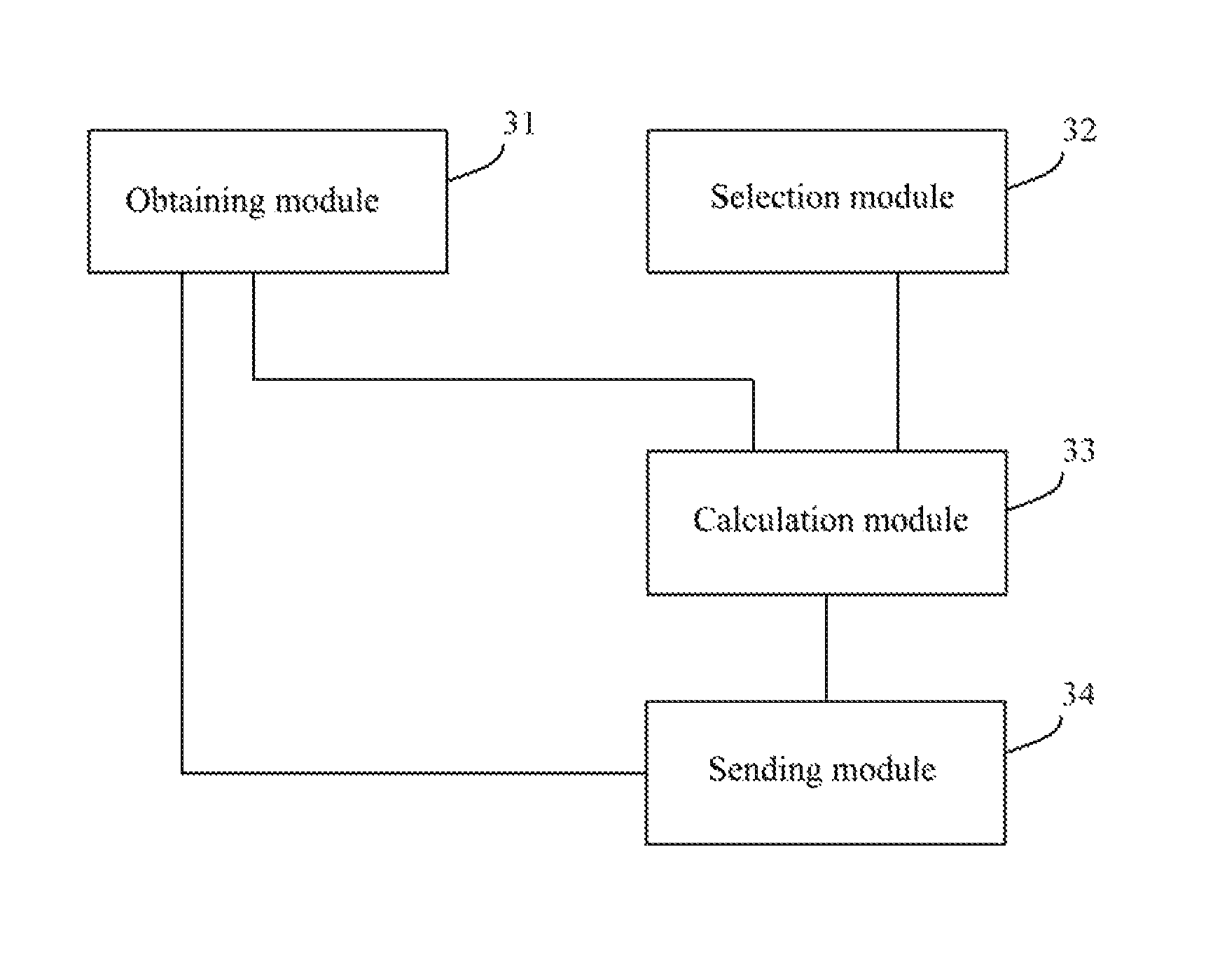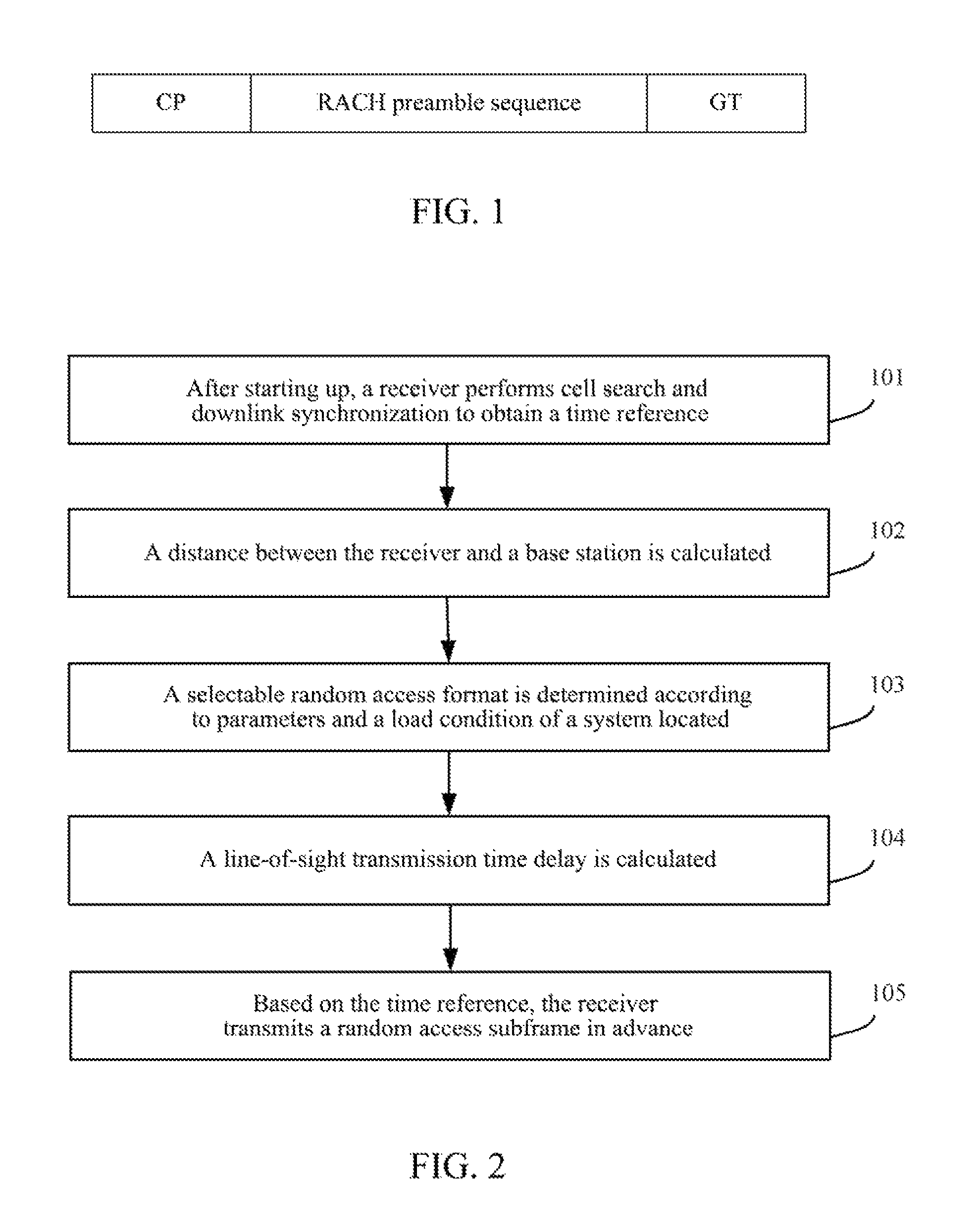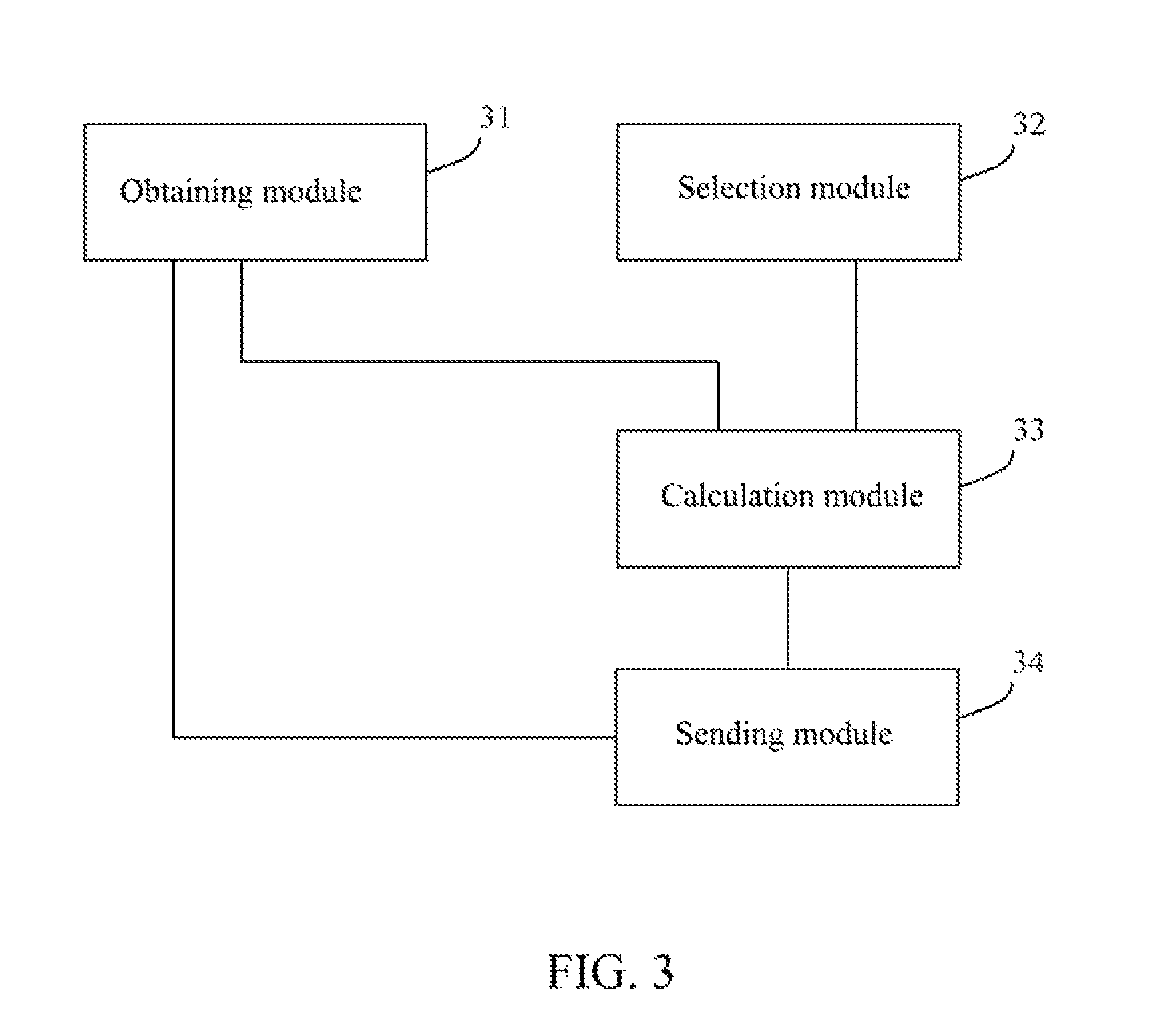Random access method and receiver
a random access and receiver technology, applied in the field of mobile communication, can solve problems such as uplink and downlink time delays, and achieve the effect of expanding the coverage radius of the cell
- Summary
- Abstract
- Description
- Claims
- Application Information
AI Technical Summary
Benefits of technology
Problems solved by technology
Method used
Image
Examples
embodiment one
[0062]In step 201, after starting up, the receiver performs cell search and downlink synchronization.
[0063]By searching the main synchronization sequence, the receiver can obtain the reference time of 5 ms, and then the receiver can obtain the frame synchronization and the physical layer cell group by searching the auxiliary synchronization sequence, and finally the receiver obtains the Identification (ID) of the physical layer cell, so far the downlink synchronization is finished, and the time reference T0 and the cell ID are obtained.
[0064]In step 202, the receiver obtains its own location P1 by utilizing the GPS positioning system, and obtains the location of the base station P2 according to the location distribution map of the base station and the cell ID; by r=|P1−P2|, let r=200 km.
[0065]In step 203, the random access format is selected to be Format 3 according to the current system parameters and the load condition.
[0066]In step 204, compared with Table 1, it can be known that...
embodiment two
[0070]In step 301, after starting up, the receiver performs cell search and downlink synchronization.
[0071]By searching the main synchronization sequence, the receiver can obtain the reference time of 5 ms, and then the receiver can obtain the frame synchronization and the physical layer cell group by searching the auxiliary synchronization sequence, and finally the receiver obtains the Identification (ID) of the physical layer cell, so far the downlink synchronization is finished, and the time reference T0 and the cell ID are obtained.
[0072]In step 302, the distance between the base station and the receiver is calculated according to a path loss model, a transmission power of the base station and a reference signal received power (RSRP) value of the receiver.
[0073]By taking the path loss model in the free space as an example,
L(dB)=32.4478+20 log10(f)+20 log10(r)
[0074]wherein, f represents a frequency band (MHz), f=2100 MHz, the transmission power of the base station antenna is Pb=5...
PUM
 Login to View More
Login to View More Abstract
Description
Claims
Application Information
 Login to View More
Login to View More - R&D
- Intellectual Property
- Life Sciences
- Materials
- Tech Scout
- Unparalleled Data Quality
- Higher Quality Content
- 60% Fewer Hallucinations
Browse by: Latest US Patents, China's latest patents, Technical Efficacy Thesaurus, Application Domain, Technology Topic, Popular Technical Reports.
© 2025 PatSnap. All rights reserved.Legal|Privacy policy|Modern Slavery Act Transparency Statement|Sitemap|About US| Contact US: help@patsnap.com



